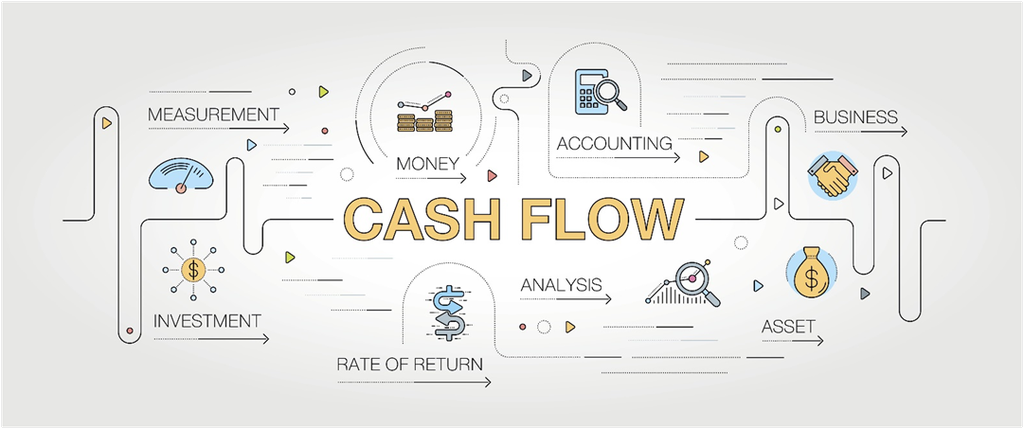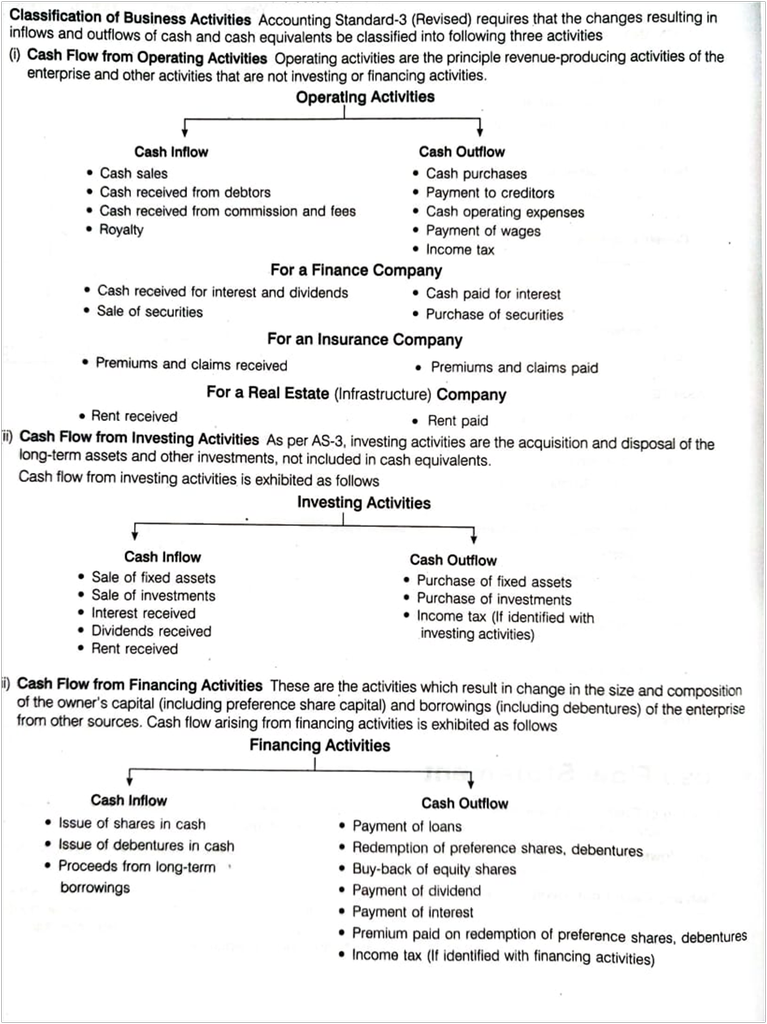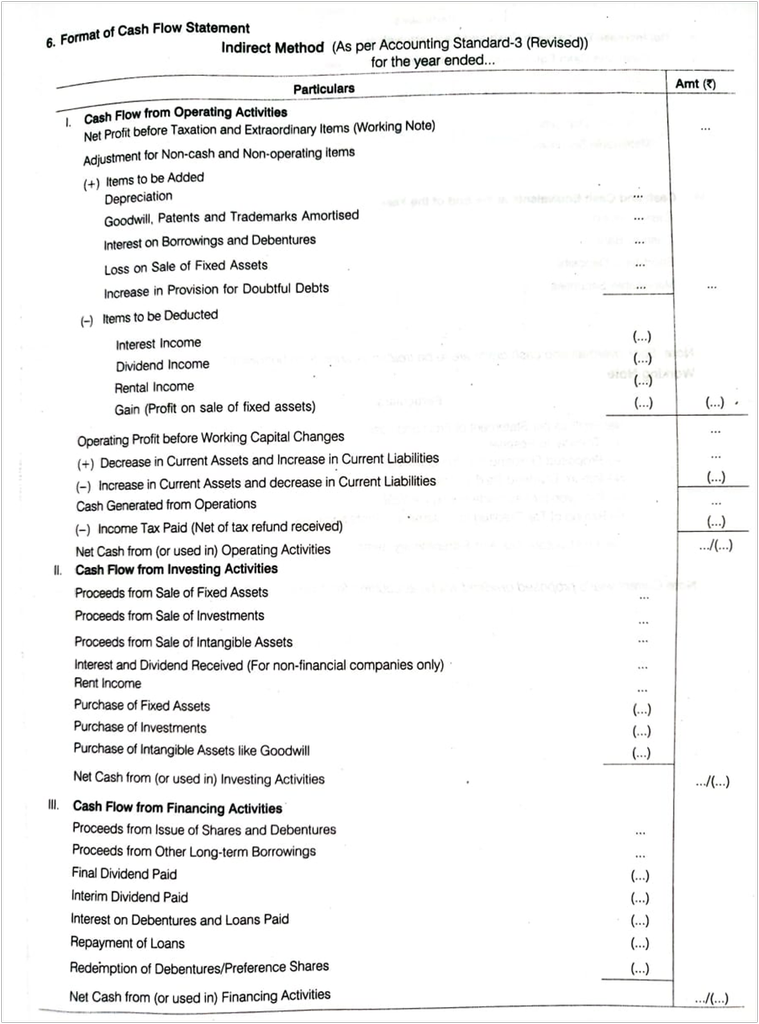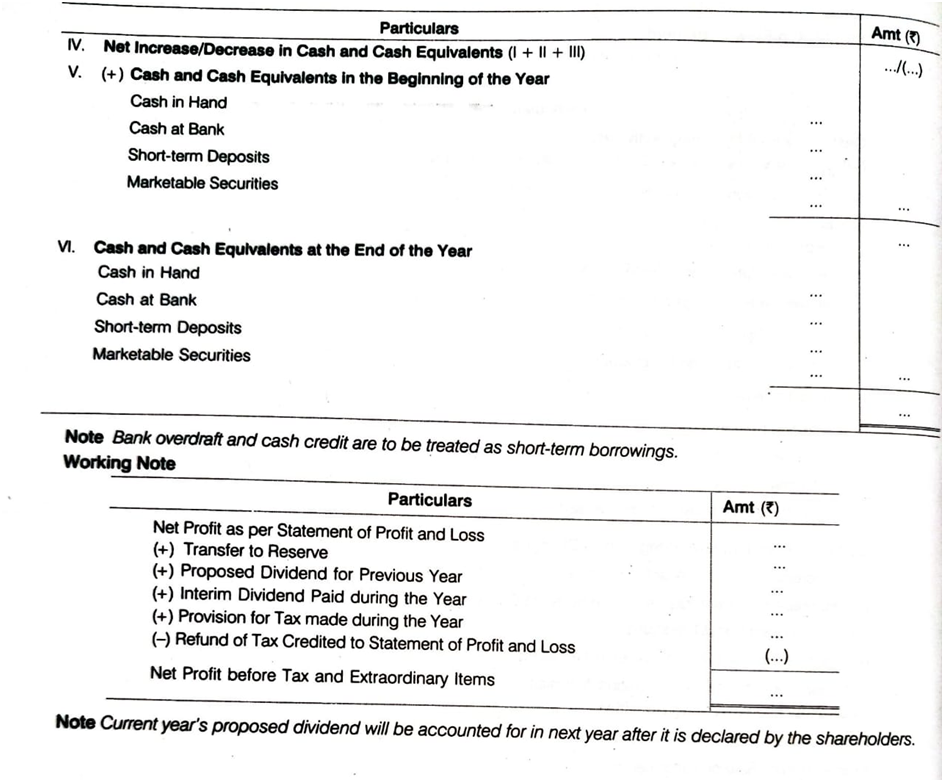1. Meaning, objectives & preparation of Cash Flow as per AS- 3

MEANING –
A cash flow statement is a statement showing the changes in the financial position of a business concern during different intervals of time in terms of cash and cash equivalents.
The Revised Accounting Standard-3 has made it mandatory for all listed companies to prepare and present a cash flow statement along with other financial statements on annual basis.
Cash flows are inflows and outflows of cash and cash equivalent. It implies movement in and moves out of cash and cash equivalents. Receipt of cash from a non-cash item is termed as ‘cash inflow’, while cash payment in respect of such item is termed as ‘cash outflow’.
Cash comprises cash in hand and demand deposits with the bank.
Cash Equivalents Cash equivalents are ‘short-term highly liquid investments that are j readily convertible into known amount of cash and which are subjected to an insignificant risk of change in value’.
Objectives of Cash Flow Statement
(i) Useful in short-term financial planning.
(ii) Useful inefficient cash management.
(iii) Helpful in formulation of business policies.
(iv) Assists in preparation of cash budget.
(v) Used for assessment of cash flow from various activities, viz operating, investing and financing activities.
Limitations of Cash Flow Statement
(i) Based on the historical cost principle.
(ii) Based on secondary data.
(iii) Ignores non-cash transactions.
(iv) No adherence to basic accounting principles.
(v) Cash flow statement is not a substitute for an income statement.
PREPARATION OF CASH FLOW STATEMENT
In order to prepare a Cash Flow Statement, we need to classify the business activities into 3 categories. The classification is shown below
Classification of Business Activities Accounting Standard-3 (Revised)
- Cash flow from operating activities.
(ii) Cash flow from investing activities.
(iii) Cash flow from financing activities.
- Cash Flow from Operating Activities Operating activities are the principal revenue-producing activities of the enterprise and other activities that are not investing or financing activities.
- Cash Flow from Investing Activities As per AS-3, investing activities are the acquisition and disposal of long-term assets and other investments, not included in cash equivalents.
- Cash Flow from Financing Activities Financing activities are the activities that result in a change in the size and composition of the owner’s capital (including preference share capital) and borrowings (including debentures) of the enterprise from other sources.


2. Adjustments relating to depreciation & amortization
![]()


3. Profit or loss on sale of assets including investments
TREATMENT OF PROFIT/ LOSS ON THE SALE OF ASSETS OR INVESTMENTS
In order to understand the concept of profit/loss on sale of assets or investments, we need to explore the concept of investment activity in more detail.
Investing activities can include:
- Purchase of property plant, and equipment (PP&E), also known as Capital Expenditure
- Proceeds from the sale of PP&E
- Acquisitions of other businesses or companies
- Proceeds from the sale of other businesses (divestitures)
- Purchases of marketable securities (i.e., stocks, bonds, etc.)
- Proceeds from the sale of marketable securities
There are more items than just those listed above that can be included, and every company is different. The only sure way to know what’s included is to look at the balance sheet and analyze any differences between non-current assets over the two periods. Any changes in the values of these long-term assets (other than the impact of depreciation) mean there will be investing items to display on the cash flow statement.
Cash Flow from Investing Activities Example
Let’s look at an example using Amazon’s 2017 financial statements.
Amazon’s investing activities include:
- Outflow: purchase of PP&E including software and website development
- Outflow: purchase of marketable securities
- Outflow: acquisitions, net of cash acquired
- Inflow: proceeds from the sale of property and equipment
- Inflow: proceeds from the sale of marketable securities
Treatment - If the business sustains a loss from the sale of an asset, the amount so received from the sale appear in the cash flow statement & is added. The gain on the sale of assets is included in the net income, the gain is shown as a deduction from the net income reported in the operating activities section of the cash flow statement (under the indirect method).

 SUDIP CHAKRABORTY
SUDIP CHAKRABORTY
